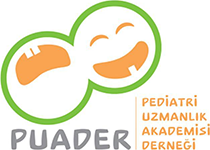Gaucher Disease Diagnosed During Adolescence
Selen Güler1 , Yeliz Çağan Appak1
, Yeliz Çağan Appak1 , Şenay Onbaşı Karabağ1
, Şenay Onbaşı Karabağ1 , Betül Aksoy1
, Betül Aksoy1 , Sinem Kahveci1
, Sinem Kahveci1 , Melis Köse2
, Melis Köse2 , Esra Er2
, Esra Er2 , Maşallah Baran1
, Maşallah Baran1
1Katip Çelebi University & Sbu Tepecik Training And Research Hospital, Pediatric Gastroenterology Hepatology And Nutrition, İzmir, Turkiye
2Katip Çelebi University & Sbu Tepecik Training And Research Hospital, Pediatric Metabolism Diseases, İzmir, Turkiye
Keywords: Gaucher's disease, adolescence, metabolic disease
Abstract
Gaucher's disease (GD) is an autosomal recessive lysosomal lipid storage disorder caused due to insufficient activity of the enzyme beta-glucocerebrosidase. Type 1 GD may present at any age but manifests in childhood in more than half of patients. In this case report, an adolescent who applied to our gastroenterology outpatient clinic with dyspeptic complaints and was diagnosed with type 1 GD is presented to draw attention to rare metabolic diseases. A 14-year-old girl complaining of abdominal and bone pain was admitted to the hospital. Erlenmeyer flask deformity was detected on the direct knee radiograph of the patient, as well as thrombocytopenia, ferritin elevation and hepatosplenomegaly. A preliminary diagnosis of Gaucher disease was considered upon detection of low levels of beta glucocerebrosidase enzyme for our patient. The homozygous variant was detected in the GBA gene NM_000157.4:c.1226A>G (p.Asn409Ser) and diagnosed as Type 1 GD. When evaluating patients, it is important to remember that some rare metabolic diseases can be observed in older children. Our patient was diagnosed with Type 1 GD at an adolescent age, and treatment was started. Currently, improvements in clinical manifestations can be achieved with existing treatments. Therefore, it is crucial to diagnose the disease at an early stage and begin the necessary treatment.
Cite this article as: Güler S, Cagan Appak Y, Onbasi Karabag S, Aksoy B, Kahveci S, Kose M, et al. Gaucher Disease Diagnosed during Adolescence. Pediatr Acad Case Rep. 2023;2(1):28-31.
The parents’ of this patient consent was obtained for this study.
The authors declared no conflicts of interest with respect to authorship and/or publication of the article.
The authors received no financial support for the research and/or publication of this article.
We thank to Birsen Gizem Özamrak from the Pathology Department of Tepecik Training and Research Hospital.

